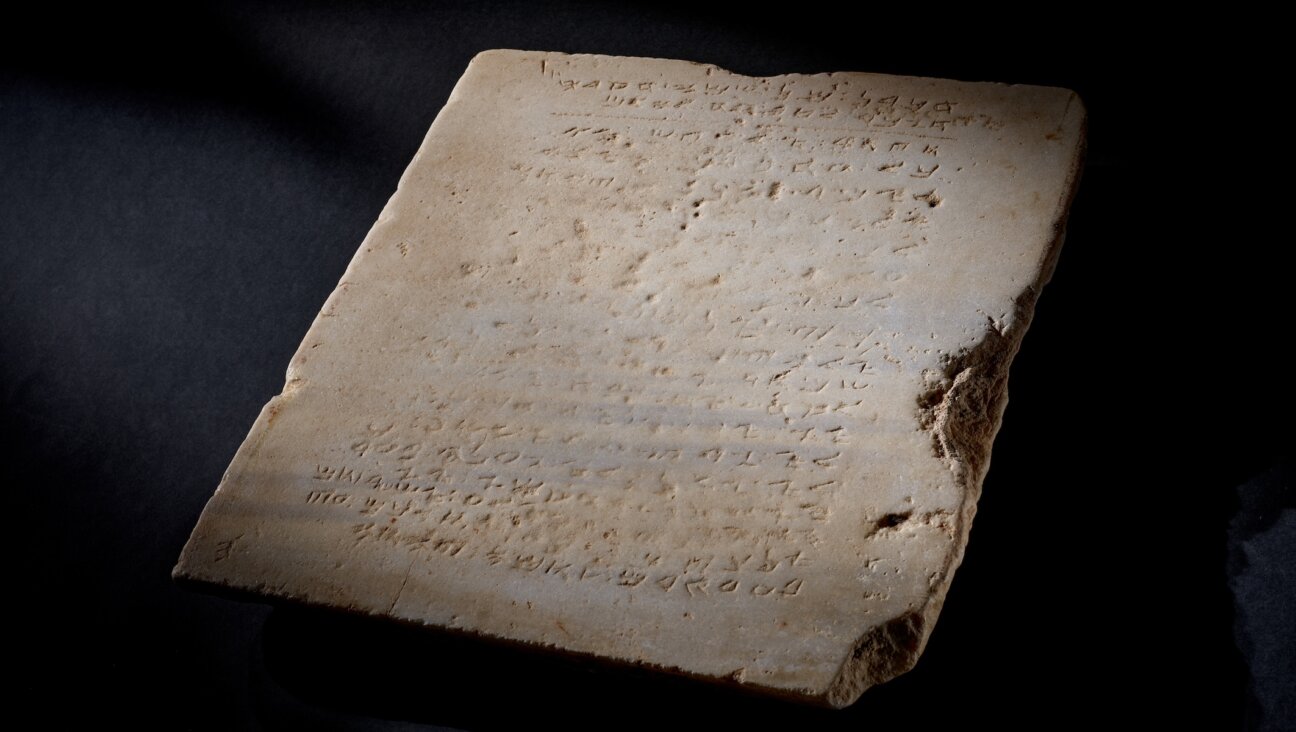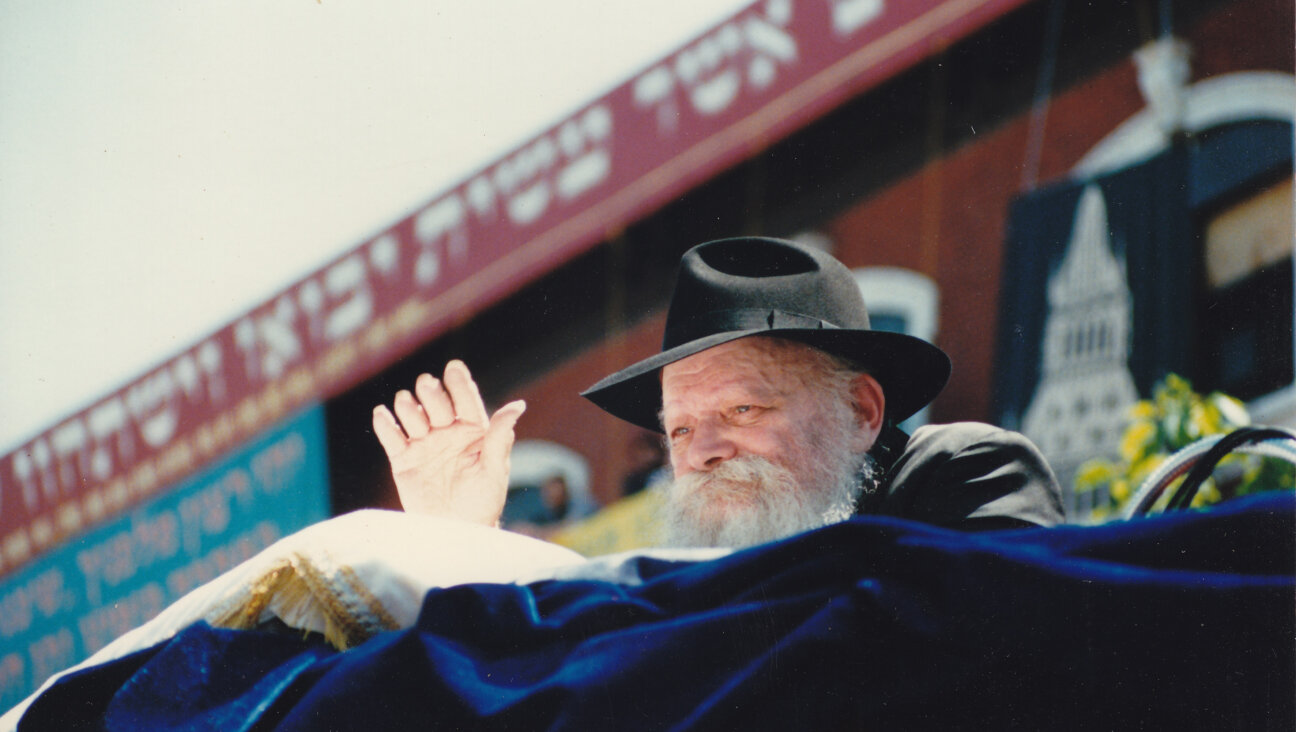Where the Torah Meets the Torus
While watching a science fiction program alone in his Newton, Mass., apartment in 1968, Stan Tenen saw a strange code flash across the screen, prompting him to consult the opening passage of Genesis — in the original Hebrew. “This was a strange urge,” he admits in one of his instructional videos, “because I didn’t know Hebrew.” Even stranger, he says, was that after cracking open a copy of the Bible he’d received as a bar mitzvah gift and examining the Hebrew text, it didn’t look like words to him. He saw a pattern. And not just any pattern: Tenen thought he had discovered a universal truth about the nature of existence.
What Tenen found — and has worked with mathematical models and limited funds for more than 35 years to prove — is at once seemingly logical and utterly dizzying, with confounding implications that stretch from the mystical realm to that of quantum mechanics. A onetime civil engineer who in his educational videos sports a black yarmulke and a long flowing ponytail, Tenen — who received a bachelor’s degree in physics with a minor in math from Brooklyn’s Polytechnic University, and who now calls himself a “visual pattern recognizer”— believes he has identified the key to unlocking the secrets of the Torah. But unlike recent attempts to find the Bible’s “hidden” messages (books such as Michael Drosnin’s 1997 “The Bible Code”), Tenen’s aim is to see scripture not as a predictor of future events (meteors, assassinations, earthquakes), but as a carrier of an ancient and universal gestural vocabulary. He argues that the text of the Torah recapitulates an intuitive set of meanings — a sort of “dance in the mind,” he said — that leads to heightened spiritual experience.
“If I’m right, I’m shaking the roots of Western civilization,” Tenen, now 62, said in an interview with the Forward.
Working by instinct, Tenen took the 28 letters of the familiar verse describing God’s creation of heaven and earth and arranged them on a chain of beads. When each lettered bead was matched up with the next occurrence of that letter, the chain curled up to form a three-dimensional spiral doughnut known to mathematicians and spiritualists alike as a torus. Tenen then folded this shape into a form resembling a hand — capable, when properly backlit, to reproduce, in shadow form, the shapes of all 22 letters of the Hebrew alphabet. He then diagrammed the connection between these projected letters, the hand gestures to which they are thought to correspond and the universal meanings behind the gestures. For example, hold up your hands and his folded torus shape to your mouth, and it forms the Hebrew letter pe, which means “mouth.” Hold your hands over your head, and it forms the Hebrew letter resh, for “head.” (Illustrations can be found on the Web site of Tenen’s Meru Foundation, www.meru.org.)
Tenen’s work, presented in speeches and videotapes, has provided the sole source of income for him and for his wife, Levanah, since 1983. He admitted that he wasn’t sure if he would be able to pay the mortgage on their house in the coming months, but remained committed to pursuing his research. “My findings, when confirmed, will be acceptable to people of all faiths and people of no faith,” he said. “This information is the bridge that can bring people together.”
Once a secular Jew with a modest religious education, Tenen has become more and more observant through his work. He rests on the Sabbath, keeps kosher and recites daily prayers. “I was drinking the sweet water of the town well,” he said, referring to the hidden knowledge he had begun to decipher, “and I had an obligation to respect the tradition.”
As with all Bible code theories, skeptics are easy to find — though, in Tenen’s case, some serious religious and scientific authorities have endorsed his ideology.
“What he is finding is a very beautiful geometric structure behind these things,” said Louis Kauffman, a professor of mathematics at the University of Illinois at Chicago who appreciates Tenen’s three-dimensional creativity. “He’s doing it in a very rigorous way, and I don’t think it’s by chance. Beyond that, it has a different meaning for different individuals.”
Others, including Meir Sendor, rabbi of Tenen’s Orthodox congregation, the Young Israel of Sharon, Mass., see the value of Tenen’s work with certainty. “For me, Stan’s work is a profound confirmation of the Torah as a divine text — the word of God,” said Sendor, who holds a doctorate in Near Eastern languages and civilizations from Harvard and a master’s degree in religious studies from Yale.
Sendor believes that Tenen’s work taps into how rabbis of the medieval period thought about the inner structure of the universe. “There are certain kabbalistic works that remain closed books to modern scholarship and even to committed kabbalists,” Sendor said. “Stan’s work provides some leverage in interpreting these works.”
But Sendor and Tenen stress that learning these secrets is hard work. “To really appreciate what he’s discovered, you have to really immerse yourself in it,” Sendor said. “It can’t be proven standing on one foot on a street corner.”
Rick Harrison is a freelance writer/reporter living in New York.
A message from our CEO & publisher Rachel Fishman Feddersen

I hope you appreciated this article. Before you go, I’d like to ask you to please support the Forward’s award-winning, nonprofit journalism during this critical time.
We’ve set a goal to raise $260,000 by December 31. That’s an ambitious goal, but one that will give us the resources we need to invest in the high quality news, opinion, analysis and cultural coverage that isn’t available anywhere else.
If you feel inspired to make an impact, now is the time to give something back. Join us as a member at your most generous level.
— Rachel Fishman Feddersen, Publisher and CEO






















